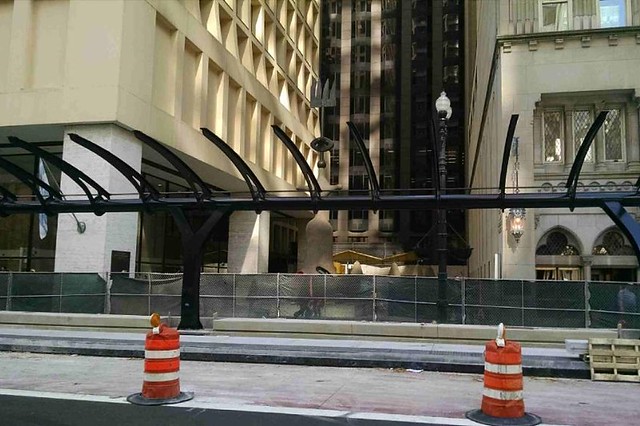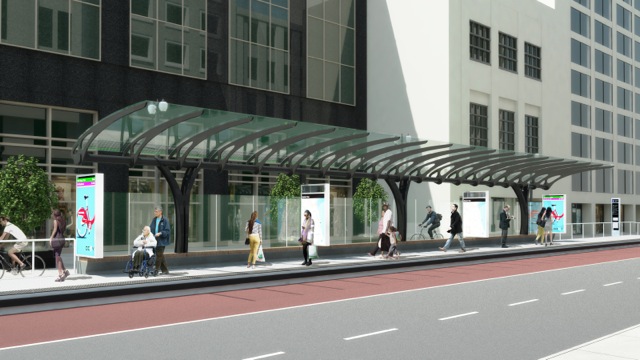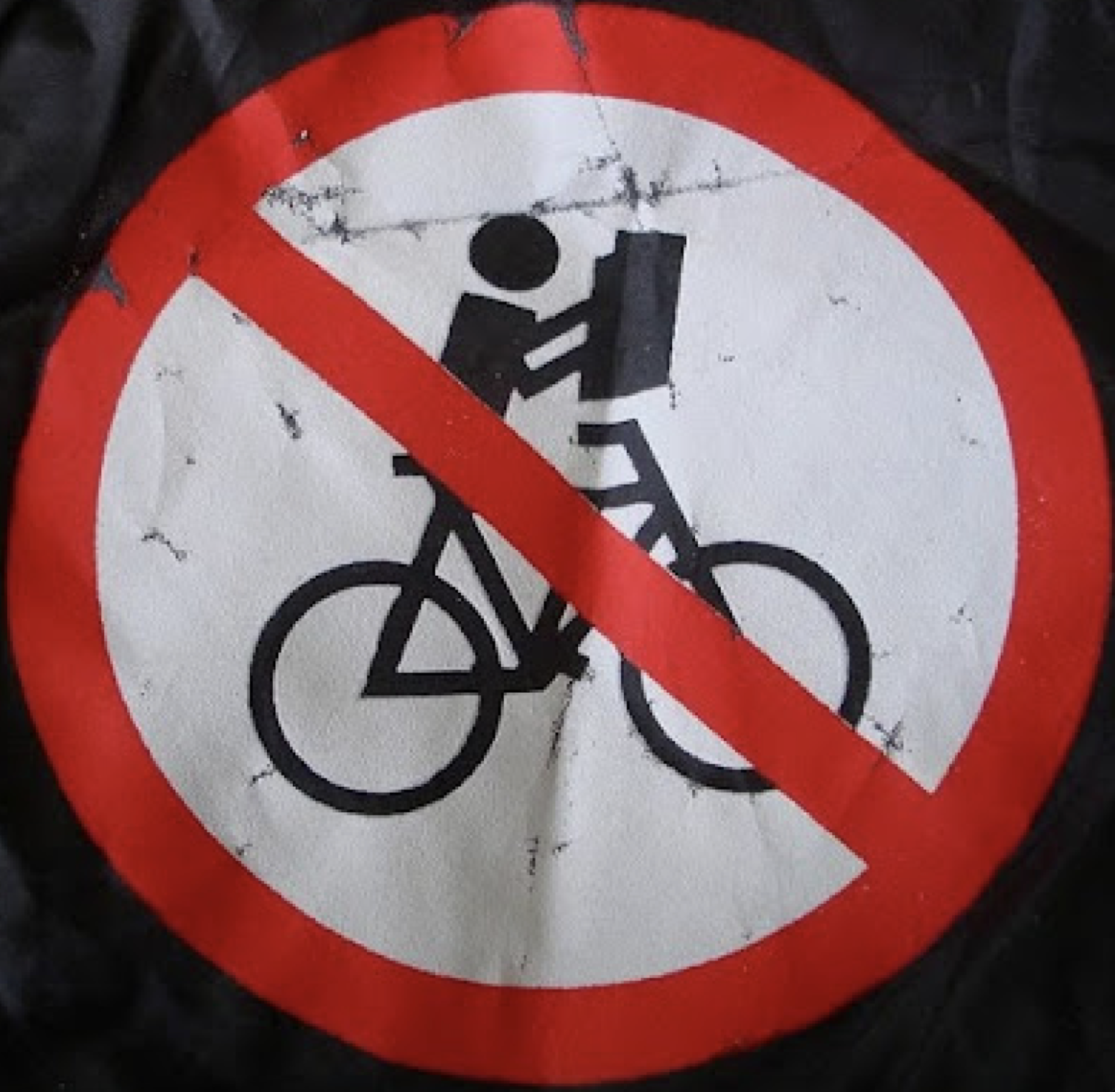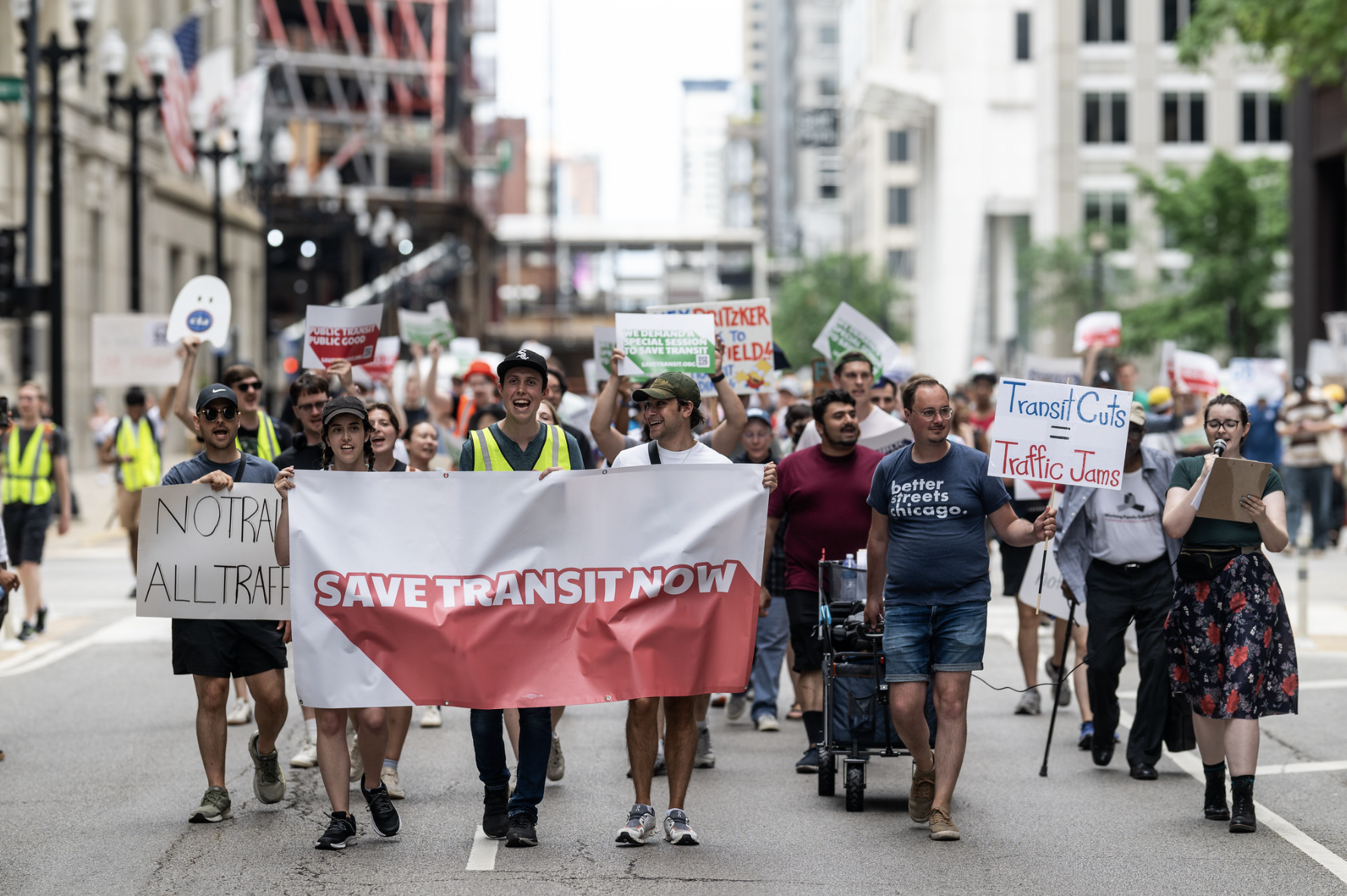
Don’t worry art lovers, the city assures us that the project to bring faster, more efficient bus service to the Loop won't permanently upstage one of Chicago’s most beloved public sculptures. The Chicago Department of Transportation says they have plans to use lighting and signs to highlight a statue by the famed Spanish artist Joan Miró, which is now located behind a giant Loop Link bus rapid transit shelter.
The sculpture, officially titled “The Sun, the Moon, and One Star,” but better known as “Miró’s Chicago” or “Miss Chicago,” was installed in 1981under Mayor Jane Byrne. It already had less-than-stellar placement in Brunswick Plaza, a dark nook sandwiched between the Cook County Administration Building and the Chicago Temple Building.
The Miró statue, which looks something like a lady in a dress with a fork coming out of her head, is located across the street from Daley Plaza. There, the lion-like “Chicago Picasso,” by Miró’s colleague Pablo Picasso, is much more prominently displayed.
The Loop Link project, expected to wrap up by the end of the year, is creating dedicated bus lanes on Washington and Madison Street in the Loop, plus protected bike lanes on Washington and Randolph. CTA customers will wait for a ride at eight 14-foot-tall bus shelters, averaging 90 feet in length, with a design that’s reminiscent of an upside-down rake.
Originally, the Chicago Department of Transportation planned to build fully enclosed stations that would have provided good weather protection. However, after merchants expressed concerns that their storefronts would be blocked, CDOT is instead building giant canopies with glass backs that stop several feet before the roof, so they may not offer much protection from blowing rain and snow. However, a concrete bench will run the length of each shelter, so there’ll be plenty of room to sit.
Despite the department’s efforts to make the canopies relatively unobtrusive, the shelter that they recently erected in front of the Miró makes the previously inconspicuous sculpture even harder to notice from the street. Karen R. Nussbaum, a classical singer who performs at the Chicago Temple, wrote a passionate letter to the Sun-Times decrying the situation:
I am sympathetic to the need for bicycle safety and bus efficiency in the Loop. However, as an art lover, I cannot fathom why this behemoth of a bus shelter had to be built right there!... Now our lovely Miro seems more like an infant trapped in a crib, her arms reaching feebly toward the bars of her cage.Why, oh why couldn’t the bus shelter be built a few more yards to the east?
CDOT spokesman Mike Claffey stated that that particular location was the only option, due to the need for a left-turn lane from Washington onto Dearborn. “This meant it would not be feasible to have [the shelter] start at the east end of the block,” he said.
“In addition, if the canopy was pushed to the west end of the block, the functionality of the station would be compromised," he added. "Only one bus could pull up at a time, or passengers would have to run to the east end of the platform to catch a bus.” Another constraint was a Pedway tunnel that runs between Daley Plaza and the County building, Claffey stated.
To help make the statue more visible, new lighting will highlight it at night. The Department of Cultural Affairs and Special Events is creating signs for the shelter with info about the Miró as well as the Picasso and other art in Daley Plaza. “Our expectation is that the location of the station will highlight the Miró sculpture and raise its profile in the mind of the public,” Claffey said.
CDOT and the county are taking a few other steps to draw attention to the statue. Trees that currently block the sculpture will be removed, and benches will be added. And the plaza’s sidewalk pavers will be extended to the curb line “to create a visual queue to passersby that the Miró is there -- there's something to look at,” Claffey said.
If the shelter absolutely has to be in that location, these seem like good strategies to mitigate its effects. However, this situation begs the question: Why not just move the Miró to a more prominent location? But from Claffey’s statements, it appears that idea was a non-starter. On the plus side, Chicago will continue to have to works by two legendary Spanish artists sitting across the street from each other.






